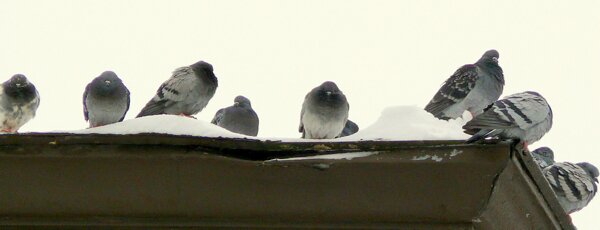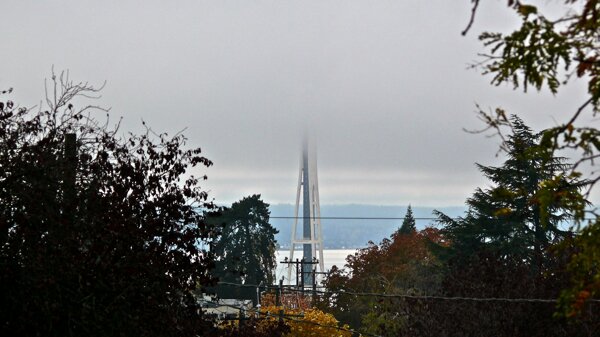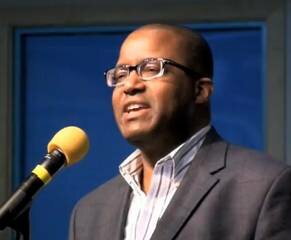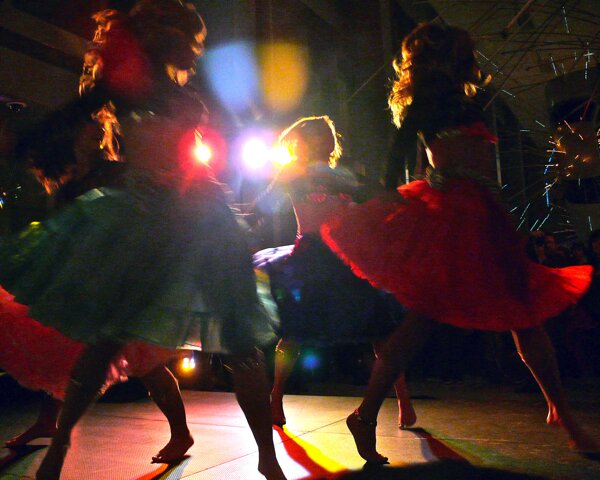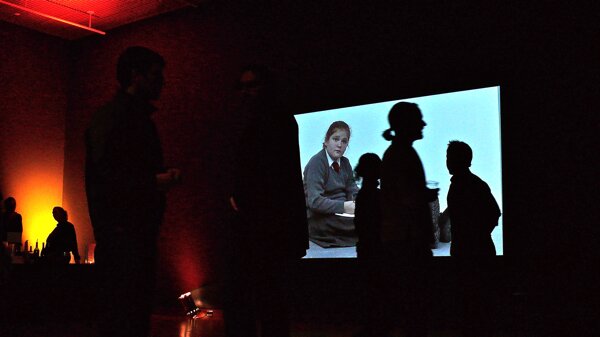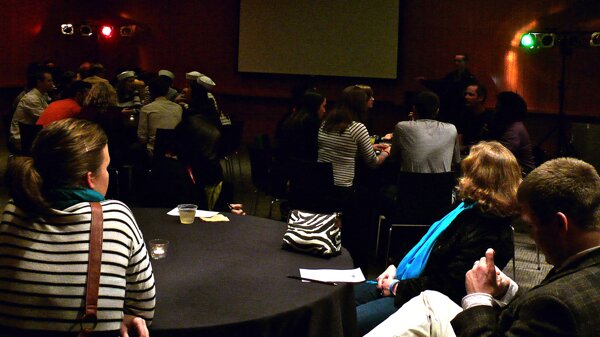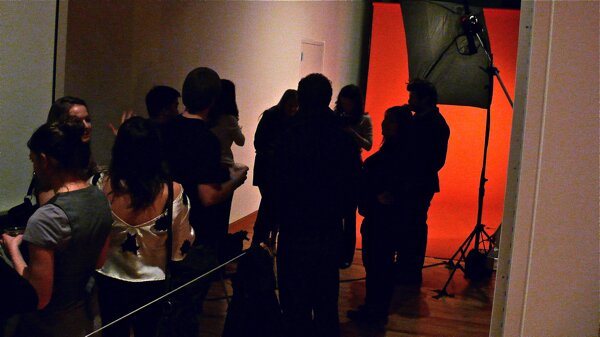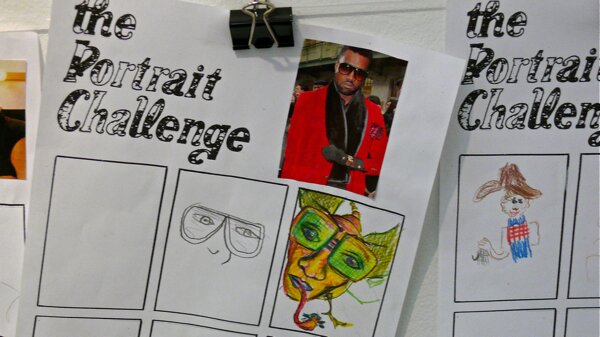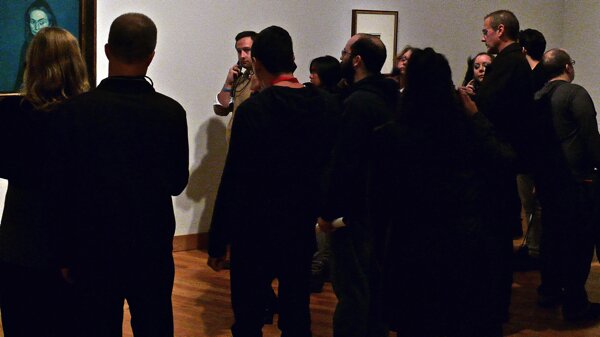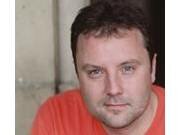Michael van Baker
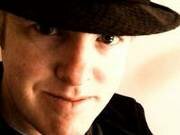
About Michael van Baker:
Neighborhood: |
Capitol Hill |
Last Login: |
3 hours ago |
Joined: |
September 01, 2009 |
Profile viewed: |
2691 times |
Total Audience: |
361739 views |
| Editor & Publisher of The SunBreak | |
Storiesby Michael van Baker |
View by List | Grid |
"More than 150,000 homes in Western Washington are without power this morning," reports KOMO News, and provides a chart of last night's windstorm's peak gusts, ranging from 40 to 60 miles per hour. Sea-Tac registered a 49-mph blow. Constance, our literary editor and White Center weather correspondent, tells us that 5,000 people down there lost power for eight hours overnight, including Constance, who's sick at home with the flu.
The next storm arrives this Wednesday, says Paul Deanno. He and Cliff Mass agree--the mountains are going to get pounded with snow this weekend, but us lowlanders will get rained on. If you're planning on crossing the passes, be ready for a wild time. Models (so far) show most of the really cold air holing up in Canada for the weekend, with some sneaking over the border into northwestern Washington. Bellingham might get snow.
Mass is hesitant to speculate on snowfall in the Sound on Monday and Tuesday, though some models show just that. The convergence zone is a wily beast, and you never know quite where it's going to appear until you're almost on top of it. Stay tuned!
Last week, the 100 to 150 inhabitants of the roving homeless camp Nickelsville were grumbling that the good news about a semi-permanent SoDo site, at the former Sunny Jim factory, was not great news, as there was still a winter to get through before the SoDo site would be ready for campers.
Today, Deputy Mayor Darryl Smith had an answer. For four to six months, Nickelsville can shelter at the site of the former Fire Station 39 (northwest corner of Northeast 127th Street and 30th Avenue Northeast) in Lake City.
"With snow forecast for this weekend and warnings of a long winter ahead, we moved fast to get the tent city residents into a secure and warm spot," Smith said. "During this time of economic hardship and limited resources, it is incumbent upon the city to make use of resources, such as the former fire station, with creativity and compassion. It is our hope that the temporary use by Nickelsville will be met with understanding."
Or not: "This is another example of the mayor just thrusting something on Lake City without consultation," Peter Lukevich, president of the Lake City Chamber of Commerce, told Seattlepi.com. Chuck Dickey, head of the Lake City Lions Club, seconded that motion: "We have enough homeless people in Lake City."
The city’s Department of Finance and Administrative Services, which owns and manages the old fire station and the new Fire Station 39 next door, will continue to manage the site. When and if approval is granted for the Sunny Jim relocation--that site still needs to be cleared and graded--a nonprofit or other organization will manage the encampment, providing services to residents and information for the city.
If there's a more fun way than a Remix to visit the monumental Picasso exhibition ongoing at SAM, I'm not sure what it could be, and I suspect it isn't likely to be legal. Museum members get a special entrance and a lounge all their own, but regular people like you and me can also buy tickets (and do, the Remixes frequently sell out) and enjoy the slightly illicit thrill of taking over a museum for the night, having a drink or two, and discovering a wide range of amusements.
Here's what you missed from last night's extravaganza:
The evening began with people milling about, drinking wine and listening to the marimba-playing, chanson-française-crooning Erin Jorgensen. There was a French culture theme on account of the Picasso exhibit coming from the Musée National Picasso, but it was also Seattle-French, like it had just biked down from Café Presse on Capitol Hill.
After Jorgensen came the Harlequin Hipsters, "Seattle's premiere partner dance improv troupe." That description seems complete but it does leave out the hula hoops.
I am notoriously bad at matching face to names, but if you want to give it a shot, here are the Hipster players. As you can see, they supply the ambiance.
Then arrived the sassiness of the Heavenly Spies, whose can-can dance mastery can be viewed at the Can Can. (That's them in the first photo, up top, too.) Pernod Absinthe was sponsoring the event so as you watched the dancing, a woman circulated among the crowd offering a sample absinthe spoon.
But it was not all DJ TigerBeat's dance music (with impromptu singalong by Seattle's young and chic to "Livin' on a Prayer"); up on the fourth floor you could wander the galleries to harp accompaniment, only to notice the songs were oddly familiar--anything from arrangements of Katrina and the Waves' "Walking on Sunshine" to The Eagles' "Desperado." Chilling.
You could watch video of a Dutch girl very hard trying to sketch a Picasso.
You could play trivia. If you're wondering about the sailor hats at the far table: The first 50 people wearing a sailor's outfit got in free. Almost everything about the museum experience is improved by having 50 people in sailor outfits wandering about.
You could have your portrait taken.
Or you could take the Portrait Challenge, and draw one yourself.
Portrait Challenge accepted! Kanye and bug-Kanye.
Crowds thronged the Picasso exhibit itself, of course. Everyone got a ticket with a 20-minute window, so that you could still move about. The exhibit comes with accompanying audio narration, which you listen to on "wands" that are about the size of an opened clam-shell cell phone. They're very popular, but you can also see that the attentional bottleneck that makes cell phone listeners bad drivers extends to walkers, too. The Remix may be over, but the Picasso exhibit runs through January 17.
 Our annual social hour and fundraiser for Northwest Harvest is tonight, November 15! Visit our Facebook invitation page for more details and to RSVP.
Our annual social hour and fundraiser for Northwest Harvest is tonight, November 15! Visit our Facebook invitation page for more details and to RSVP.
Join the writers and readers of such blogs as Rainier Valley Post, SouthendSeattle, CD News, Capitol Hill Seattle, and Seattlest for some fun with YouTube, a beer tasting courtesy of Newcastle Brown Ale*, and a limited supply of complimentary pizza from Tutta Bella.
This year we're going to be meeting up in Columbia City, at the Bourbon Bar (4916 Rainier Ave. S.) from 6 to 9 p.m.
If pizza and beer isn't enough, know that the Bourbon Bar also has a new bar menu of small plates and, you guessed it, a wonderful selection of bourbon.
We're also hooking the bar's TV up to the internets for the evening, so help us build a YouTube playlist by posting your favorite(s) in the comments.
All of this for just a $5 suggested donation at the door, or two cans of food. See you there!
*Please enjoy the one and only Newcastle Brown Ale responsibly.
I can't attend "Journalism: a.WAKE.ning?" this Monday, November 15, because I'll be one of the hosts of BlogsGiving, but if I weren't, I'd be in the audience in the Upstairs Gallery at Theatre Off Jackson.
The evening kicks off at 7:30 p.m. As you enter you'll be presented with the choice of champagne or a shot of rye, symbolic of the question: "Are you celebrating a revolution in journalism or dancing on its grave?"
"I may just stay sober," playwright Paul Mullin told me on the phone. "I don't know which way it'll go."With NewsWrights United's second Living Newspaper production coming up in February, The New New News, Monday night is both promotion and fundraiser. Mullin sees the Living Newspaper model as a way to inject some much-needed life into theatre, writing:
Happily, when we produced our first edition It’s Not in the P-I: A Living Newspaper about a Dying Newspaper, we noticed an added bonus. The people came—and we sold out nearly every night—not to see excellent theatre adeptly presented by trained professionals but rather stories about a local newspaper that they loved (or hated) that had died recently.
After a preview scene comes a panel discussion on new media and journalism, moderated by NewsWrights producer Tom Paulson and featuring Pulitzer Prize-winning political cartoonist Dave Horsey (Seattlepi.com), Monica Guzman (Intersect.com), Josh Feit (PubliCola), sportswriter legend Art Thiel, columnist Brendan Kiley (The Stranger), and Chris Grygiel (coordinator of political coverage for the Seattlepi.com blogs). Tickets are $20 via Brown Paper Tickets or at the door.
"We're a hotbed of online journalism," said Mullin. "Big stories are happening in our backyards." He mentioned WaMu's downfall, the Maurice Clemmons police shooting. But the biggest story may be the media that covers those stories: Both the Seattle Times (which won a Pulitzer for its Clemmons coverage) and Seattle Crime were heads-down on that story for days on end, Seattle's de facto paper of record and a niche journalism start-up hustling to break news. (For the new production, the Newswrights turned to Facebook for leads.)
As for the Living Newspaper, Mullin said that format allows Newswrights United to explore the emotional value of news stories. News is often delivered in an emotion-free way, but at It's Not in the P-I, Mullin felt, they found a way into the public mourning of an institution as it passed away. (Here's David Horsey's review.)
"We're pro-am," said Mullin, noting their actors are a combination of Seattle stage veterans and student actors. In February, they'll be "touring" Seattle with The New New News, with stops at the South Seattle Community College, Erickson Theatre on Capitol Hill, and North Seattle Community College.
 "Admiral Junction" (Photo courtesy Flickr pool member smohundro)
"Admiral Junction" (Photo courtesy Flickr pool member smohundro)
Neighborhood Headline News
- Seattle grapples with redefining graffiti (My Ballard)
- Past and present: Chickens in the basement (Beacon Hill Blog)
- Visiting Belltown's Last Dive Bar with Igor Keller (Belltown Messenger)
- Belltown Wildlife Sightings (belltownpeople)
- Secret Service: Credit card fraud wave tied to 'one Capitol Hill restaurant' (Capitol Hill Seattle)
- Public weighs in on Metro task force recommendations (Central District News)
- TOPS@Seward School in news: District ranking, draft geographic zone are released (Eastlake Ave)
- Warning about rash of car break-ins (Fremont Universe)
- McGinn's End Run on Nickelsville: Confusing (Blogging Georgetown)
- No charge for collection of extra leaves during month of November (My Green Lake)
- Meeting with FAA next Thursday (Magnolia Voice)
- What IS this mysterious street work? (Maple Leaf Life)
- Manhunt at Woodland Park Zoo Friday night (PhinneyWood)
- It’s official: QA gym will remain open (Queen Anne View)
- Color-Coded Map Illustrates Striking Disparity Between North & South Seattle Schools (Rainier Valley Post)
- Beauty Biz & Hair Culture in the Southend (Southend Seattle)
- The thin line between graffiti and art (South Seattle Beacon)
- Nickelsville keeping its next move under wraps (U District Daily)
- Farmers market site discussion under way (My Wallingford)
- Grocery workers’ contract talks to resume next week (West Seattle Blog)
-
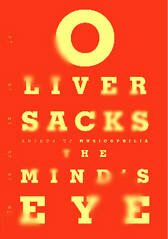 About half of Oliver Sacks' The Mind's Eye is precisely what you've come to expect from the physician and professor of neurology and psychiatry: firsthand case studies of people facing unusual neurological obstacles, delivered by a kindly, curious observer.
About half of Oliver Sacks' The Mind's Eye is precisely what you've come to expect from the physician and professor of neurology and psychiatry: firsthand case studies of people facing unusual neurological obstacles, delivered by a kindly, curious observer.
A pianist has a degenerative condition that is slowly robbing her of the ability to read music (or anything else), another is stricken by aphasia following surgery to remove a blood clot. An author has a sudden stroke and loses his ability to read and remember much, but compensates by learning to read with his tongue; somehow, tracing the shape of letters with his tongue results in comprehension of the word he's spelled. If you're a long-time Sacks reader, you may find yourself learning less about neurology than the surprising amount of coping skills that people can marshal in these instances.
But in chapters titled "Face-Blind" and "Stereo Sue," more about Sacks himself creeps into the narrative. "I have had difficult recognizing faces for as long as I can remember," writes Sacks, admitting to what's known as prosopagnosia. "...I think that a significant part of what is variously called my 'shyness,' my 'reclusiveness,' my 'social ineptitude,' my 'eccentricity,' even my 'Asperger's Syndrome," is a consequence and misinterpretation of my difficulty recognizing faces."
As it turns out, there's a broad range of face recognition ability; at one end of the spectrum are people who can recognize the person who served them coffee once three years ago when they pass them on the street, and at the other are people who mistake their wife's head for a hat.
In telling the story of Sue Barry, the woman who against all expectation gained stereo vision, Sacks details his own lifelong fascination with stereo viewers (he was a member of the New York Stereoscopic Society). So it's with some upset, turning the pages of "Persistence of Vision" that you discover (along with Sacks, it's written as excerpts from his diary) that the author has an ocular melanoma, a millimeter from the fovea.
All at once, the guiding, imperturbable physician becomes a typical basketcase patient, fighting against mood swings and dark prognoses, full of anger and regrets. When a laser treatment removes his stereo vision, you feel it keenly. And by page 200, you have a much greater sense of what coping skills can and can't accomplish. As Sacks' vision is not expected to much improve--the reverse is true, in fact--his final chapter on blindness and the "mind's eye" is doubly poignant.
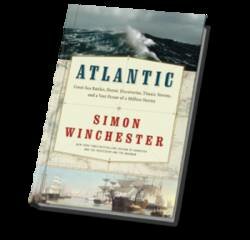 Since I'd briefly put down Simon Winchester's Atlantic: Great Sea Battles, Heroic Discoveries, Titanic Storms, and a Vast Ocean of a Million Stories to read from Mind's Eye, it was funny to see him pop up in Sacks' book on page 165.
Since I'd briefly put down Simon Winchester's Atlantic: Great Sea Battles, Heroic Discoveries, Titanic Storms, and a Vast Ocean of a Million Stories to read from Mind's Eye, it was funny to see him pop up in Sacks' book on page 165.
Convalescing after his eye surgery, Sacks puts down in his diary: "Have just written to Simon Winchester, telling him how much pleasure I have got from listening to the audiotape of his book Outposts. [...] I have been a reader all my life, and am not fond of being read to, on the whole. The Simon Winchester was a pleasant exception to the rule." (You, too, can listen to some Winchester audio here.)
The pleasure of reading Winchester, a British geologist turned journalist and author, is remarked upon widely. The preface to Atlantic is positively Dickensian in its portentous yet conversational tone: "The ocean romance that lies at the heart of this book was primed for me by an unanticipated but unforgettable small incident. It was a clear cool dawn on Sunday, May 5, 1963, and I was eighteen years old. I was alone, on passage aboard a great ocean liner...."
The rest of the book, which charts the Atlantic's history from "The Beginnings of its Goings On" to "Falls the Shadow, Fades the Sea," is almost never anything less than entrancing in its erudition, historical sweep, and retailing of maritime yarns. A glossary of "possibly" unfamiliar terms includes bollard, curragh, cyanobacteria, hammada, loxodrome, pelagic, quinquereme, snood, and taffrail. There are more terms you'll have to look up on your own, as well.
Confronted with the vast eras of time an ocean's lifespan encompasses, one of Winchester's most troublesome tasks was trying to find a way to organize the book so that he could consider days and epochs in its pages without giving the reader whiplash. His solution should delight English majors, if nothing else, because he builds his biography of the Atlantic around Shakespeare's seven stages of life, from the As You Like It monologue that begins, "At first the infant, mewling and puking in the nurse's arms...," and ends with "second childishness and mere oblivion; sans teeth, sans eyes, sans taste, sans everything."
While Winchester doesn't stint on the long, geologic view ("The final moment of the Atlantic's existence will come in about 170 million years"), his primary concern is with the relationship of humans with the ocean, from the early Phoenician sailors of the African coast to the Norsemen and Irish who put to sea (thus the curragh in the glossary). You learn about the golden age of Atlantic of cartography (including Benjamin Franklin's mapping of the Gulf Stream for the benefit of the postal service), and trade and piracy, slaveships and windjammers. There are mighty naval battles and whaling fleets and telegraph cables stretched across the deeps.
Too soon, Winchester recounts how the British government dumped almost thirty thousand tons of highly radioactive waste into the Atlantic at "a specially selected site four hundred miles west of Land's End," and how a ocean-wide contamination (mercury, PCBs, cyanide, pharmaceuticals) has since occurred. And of course there's the vicious toll that industrial fishing has taken, and last but not least, climate change.
Interspersed throughout all of this are journalistic touchdowns that dispel any mustiness of history. These enter early on, with a visit to the island of Mykines in the Faroe archipelago:
I was sitting on the cliff edge, my legs dangling over half a mile of emptiness. I was facing due west. Just below me were clouds of seabirds, the gannets and fulmars, kittiwakes and storm petrels, and beside me were the chattering congregations of puffins. Ahead of me there was just nothing--just an endless, crawling sea, hammered like copper in the warm sunshine, and stretching far, fifty miles, a hundred....
Later, during his recounting of the Falklands war, Winchester details his own imprisonment as a suspected spy, and how his captor looked him up years later to apologize for his delight in telling Winchester about the sinking of the Sheffield, having breached an unspoken sailor's code. These are things that only Winchester can tell you, as in the epilogue, when he describes his visit to the place a cargo carrier wrecked off Skeleton Coast in 1942, with a crew of 64 and 21 passengers. The remnants of the wreck, when Winchester finds them, are rusting and sinking in sand. "Beyond the breakers, the green Atlantic growled on, restless and eternal."
- Simon Winchester appears at Town Hall at 7:30 p.m. on November 17.
That would be news to anyone who's spoken with the state legislature. The latest lawmaker to go on record vowing to make Seattle pay for any excess costs is Rep. Larry Seaquist, a Democrat from Gig Harbor. Seaquist told the Seattlepi.com, "I will be among those who make damn sure that deal stands in place. We bought our own bridge, you can buy your own tunnel" (a reference to funding of the second Tacoma Narrows Bridge).
Gov. Gregoire has mounted lawyerly arguments against the possibility of cost overruns, saying things that sound like there's little possibility of such a thing ever happening, and heaping scorn on McGinn as a foot-dragger. "What could cause a cost overrun? Delay," said the governor, despite the fact that, when it suits WSDOT, a year's extension to the project's timeline is spun as bringing costs down.
Gregoire has also called the specific provision "unenforceable," which may be technically true. But it's also disingenuous. The Legislature is perfectly capable of writing an enforceable provision, and Sen. Jim Kastama (another Democrat) went on record over a year ago to say, if costs exceed the budgeted amount, Seattle will pay. Note that these are both Democrats, and that recent Republican wins have cut into the Democratic majority in both House and Senate.
So why should we trust the governor on this issue? She's minimized evident risks, cast aspersions on those who questioned the soundness of the project's funding, and moved goalposts as needed--but the provision that signals the Legislature's intent to make Seattle pay for cost overruns has never gone away, and nor have the legislators who insisted on it. Only in politics would it be an insult to point that out in public.
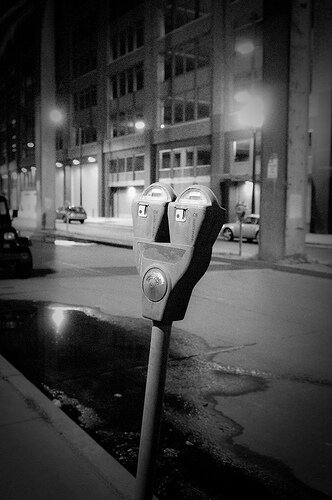 Photo courtesy Flickr pool superstar Slightlynorth
Photo courtesy Flickr pool superstar Slightlynorth
The City Council is going along with Mayor McGinn's plan to raise parking meter rates in Seattle, to as much as $4 an hour, but won't increase the parking tax rate paid by private lots and garages. They're also calling for two parking studies: one to determine the best rates for neighborhoods, and one to follow up on Tim Burgess's interest in dynamic parking pricing. (Here's his parking op-ed with Mike O'Brien.)
Nothing about the budget process is likely to be uncontroversial, but so far only PubliCola has paid much attention to the Council's tentative approval of City Attorney Pete Holmes' try at belt-tightening. Holmes wants the city to halt "a longstanding contract with private law firm Stafford Frey, which defends the police department in tort cases." He claims that many cases can be handled by city attorneys for about one-third the cost of Stafford Frey's billings, though the city will open more complicated cases for bid.
The savings could amount to $1 million. But as Dominic Holden reports in the Stranger, Rich O'Neill, president of the Seattle Police Officers' Guild, has threatened to sue the city if the union doesn't get the more pricy representation.
"Over the last six or seven years, this was a real hot potato," the Council's Nick Licata told Holden. It still is. But a $67 million deficit may have the last say.
